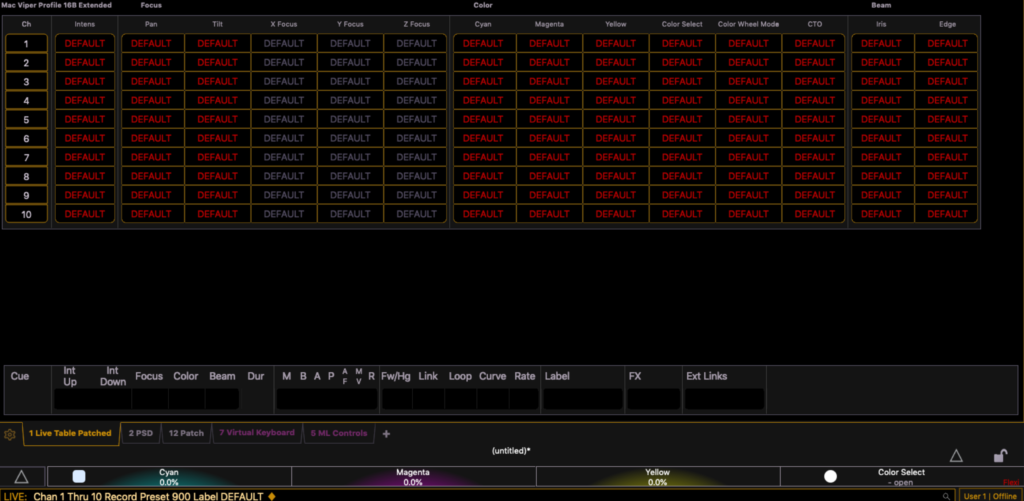I am so grateful to the people I have learned from through these many years, and so full credit- this idea comes directly from the programmer/trainer Cat West. If you don’t program GrandMA or Hog, you might not have heard of her. You’re missing out. She’s brilliant, and I had the pleasure of taking a Hog class from her very early in my career, where she taught me both how a Hog works and many programming concepts I still use.
Stop Reminiscing- What is a Default Preset?
A Default Preset is simply a preset that captures all the default values for all fixtures in your show. This is different from a Home Preset because it is meant o be recorded and used as a reference. When you start a show you apply it in your programmer and record it as your starting cue- before your Walkin look, but after any channel check you may have. Why is this good? Imagine you have the good luck to get a recurring holiday show. Year one, your rig exists of Viper Profiles, but year two, your vendor has switched over to Elation Picassos. If you have lived through such a thing, you know what can happen. If you haven’t- you can have wild and unpredictable behaviors occur. The iris value for your previous fixture can make your current fixture strobe its iris open and shut, for instance. Using a Default Preset removes all these issues. I’ll show you what it looks like.
Start a blank show file and add ten Vipers into the file. While they are in their default values, type [Record] [Preset] 900 [Enter]. Since everything is at default, EOS did not actually record anything into the Preset because no information is active in the programmer. My favorite way to address this is to type 1 [Thru] 10 {Make Man} [Enter]. You will now see a bunch of red values for all parameters.

Now type [Select Last] [Record] [Preset] 900 [Label] DEFAULT [Enter]. Notice all parameters are now in the Preset 900 Default Preset.

Next, I record cue 0.5, or whatever you wish to number it at the beginning of your cue stack, and label the cue Default Values. Now do the rest of your show. Be careful for moments where you wish to build from black. If you release your cue stack, all of a sudden you will no longer have these references in the background, waiting to help you in the future. If you wish to do that, apply the Default Preset, then build from there and record.
When you need to trade fixtures out in the future, it is very easy. You will select the units in patch, touch where it says {Type} and then select your new fixture type. Perhaps some readdressing will need to happen. Then you go to Live and with no cues or submasters running, grab these channels, make them manual, and then update the Default Preset, which in turn will update all cues so that values at their default are how they should be. Since you will have programmed your show with Color, Beam and Focus palettes (because you’re smart like that), all you have to do is update the rest of your references and your show is ready to go.
Programming is a profession of data management and handy tricks. This one is a very handy trick that has helped me and hopefully it will help you too. As always, if you have questions or suggestions, comment below.